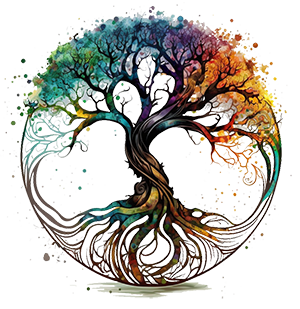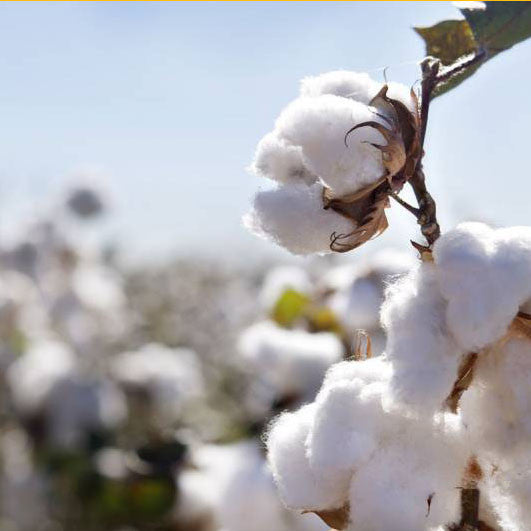Like organic foods 20 years ago, the idea of organic cotton is confusing to many of us. It’s taken a little longer to catch on because the correlation isn’t as direct. We don’t eat cotton fiber (at least we hope you don’t!) However, more people are becoming knowledgeable as to how the organic cotton movement is just as powerful and important as that of organic foods.
In addition to being one of the most widely grown crops in the world, growing conventional cotton is also one of the most chemical-intensive. These chemicals have tremendous impact on the earth’s air, water, soil, and the health of people in cotton-growing areas. They are among the most toxic chemicals as classified by the Environmental Protection Agency.
The problem is even worse in developing countries with uninformed consumers, and lack of stable institutions and property rights. In addition to destroying the land, thousands of farmers die from exposure to these chemicals every year.
So, we’ve decided to put together a little information to help spread the word. Check out our questions and answers below.
How do I know if it's organic?
Unlike food, textile products don’t have to be certified in order to be described as organic. A product claiming to be organic might only contain a small percentage of organic cotton or may be made of organic cotton but dyed using toxic chemicals which would never be allowed in certified organic products.The use of any organic cotton is a great first step, but in order to be sure a product really is organic from field to finished product, look out for either the Global Organic Textile Standard (GOTS) symbol, the Soil Association symbol or the Organic Exchange symbol. See below for details of what these symbols mean:
|
|
GOTS symbol: Product grown and processed to organic standards. Products carrying the GOTS symbol are made from organic fibres, have met strict environmental and social criteria during processing and have been certified by an independent, third party along the whole supply chain. |
|
|
Soil Association symbol: Product certified to the Global Organic Textile Standard by Soil Association Certification Ltd. The Soil Association was a founder member of GOTS and is a quarter owner of Global Standard GmbH which manages the GOTS. |
|
|
OE100 symbol: Cotton in the product grown to organic standards. Product has been tracked and traced along the supply chain by an independent, third party. Contains 100% certified organic cotton fibre, but hasn’t necessarily been processed to organic standards. |
|
|
OE blended symbol: Product contains a minimum 5% of organic cotton fibre. |
Is organic cotton sustainable?
To sustain a method of production in the long term (and thus make it sustainable), healthy and climate change resilient soils must be maintained, biodiversity of seeds and wildlife must be promoted and the livelihoods of farmers protected. Organic agriculture is based on this approach.
The system can’t be reliant on non-renewable resources, such as synthetic fertilisers and pesticides. Any kind of mono-crop production utilising non-renewable synthetic fertilisers and pesticides and Bt Genetically Modified seeds cannot be considered environmentally sustainable by any reasonable definition. Sustainability is often described as a journey of small manageable steps. But it is important to keep the end goal in mind.
How can I be sure my clothes haven't been, dyed, treated or processed with risky chemicals?
The impacts of producing our clothes are felt beyond the cotton fields. Greenpeace's Dirty Laundry campaign brought to light the toxic water pollution resulting from the release of hazardous chemicals used by the textile industry. These practices are posing serious and immediate threats to our precious ecosystems and human health. 20% of freshwater pollution comes from textile treatment and dyeing.
However, cotton carrying the GOTS or the Soil Association symbol has not only been grown organically, it has been processed organically too. This means that inputs such as dyes and inks have met strict biodegradability and toxicity rules and waste water is treated before it's let out into the environment - protecting local ecosystems and communities.
What's the difference between Fairtrade and organic cotton?
Fairtrade cotton farmers receive a premium price which they can use to cover production costs and fund community development projects, such as drilling wells and building schools. Some Fairtrade farmers still use pesticides (although only from a restricted list), but 19% of all Fairtrade cotton is also organically produced.
Organic farming recognizes that we live in a world which operates as a complex system and that every action has direct and indirect impacts on other people and the environment. Organic cotton farmers aim to minimise negative impacts and promote positive ones. For example, they concentrate on natural ways of building soil fertility to increase productivity, rather than using synthetic chemicals which might cause short term yield increases but have long term impacts on the surrounding environment. For more information, download the briefing.
Cotton which is 'dual certified' organic and Fairtrade is considered the 'gold standard' for sustainable cotton.
Is organic cotton good quality?
Organic produces great quality cotton. As Mariusz Stochaj from Continental Clothing puts it “…when compared like-for-like, organic fibres consistently produce better quality yarns than conventional cotton.”
Does organic cotton cost more?
The trend towards fast and cheap fashion often means someone or something else is paying the price. When it comes to cotton, this can be the farmers - 99% of whom live on the breadline in developing countries, or the environment - degraded and poisoned by pesticides and fertilisers.
The price of organic includes investments made by farmers who are protecting the environment, maintaining soil fertility, preserving biodiversity and conserving water. This means organic cotton sometimes (but not always) is more expensive because the costs aren’t hidden.
By letting your favourite brands and retailers know you want organic cotton (by buying it or asking them for it), you can encourage them to build relationships with suppliers. Committing to purchase in advance benefits everyone; it secures farmers’ incomes, helps them plan ahead and improve their farming practices, which in turn reduces the price of producing organic cotton, meaning a lower price all round.
Have you got a question?
If you've got a question about organic cotton, let us know and we'll answer it here - email us on india1001.com@gmaiil.com
Our Conclusion : Sustainable farming without use of chemical based fertilizers and insecticides is important for all trades related to agricultural produce. Having said that, It is important that norms are followed, and certifications are met.. and displayed on the products. An organically made yarn that is printed with chemicals on the screen printing table is not organic cotton. Only when the process is followed all though.. will it qualify to be an Organic Cotton product. Also watch out for non-organic produce .. claiming to be Organic.. based on regional, intermediate processes, or just nothing.. just to make you pay a premium. Please exercise your judgement wisely.






1 comment
I am all out for Indian organic cottons